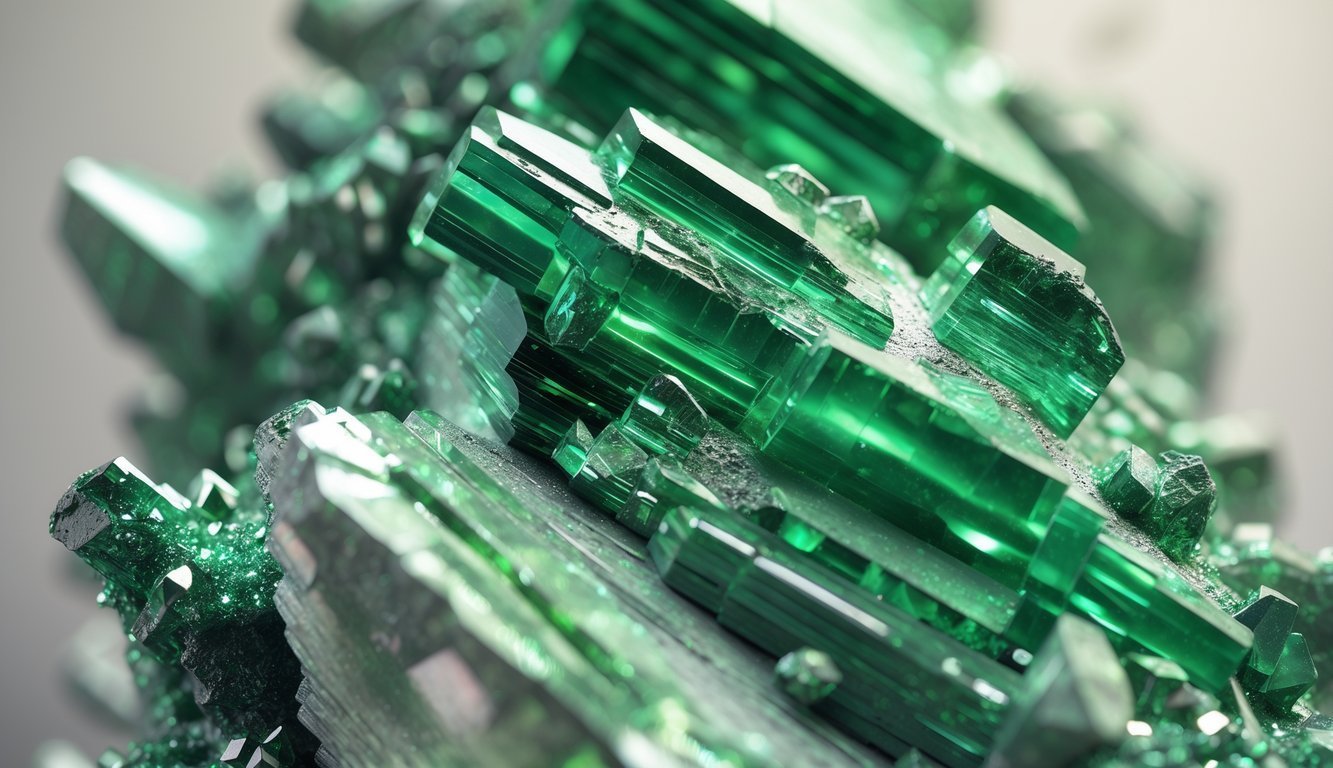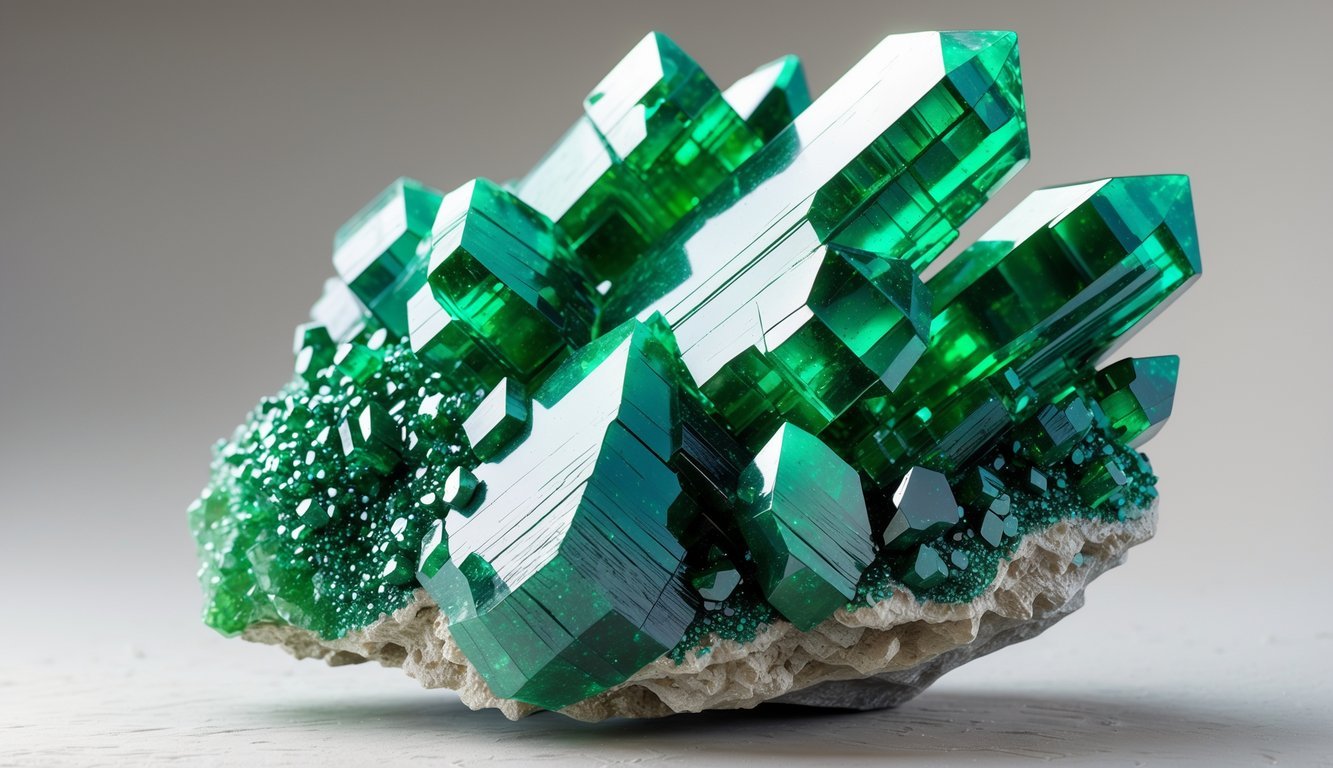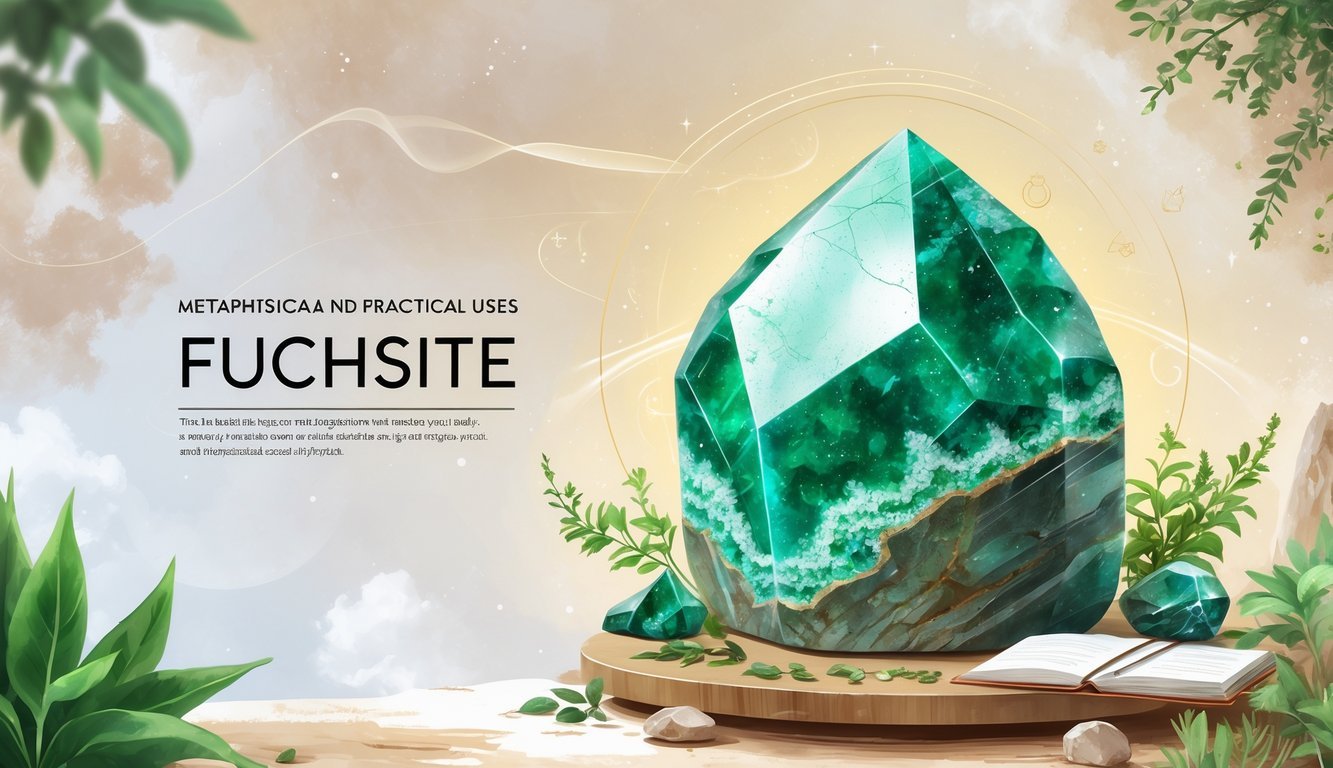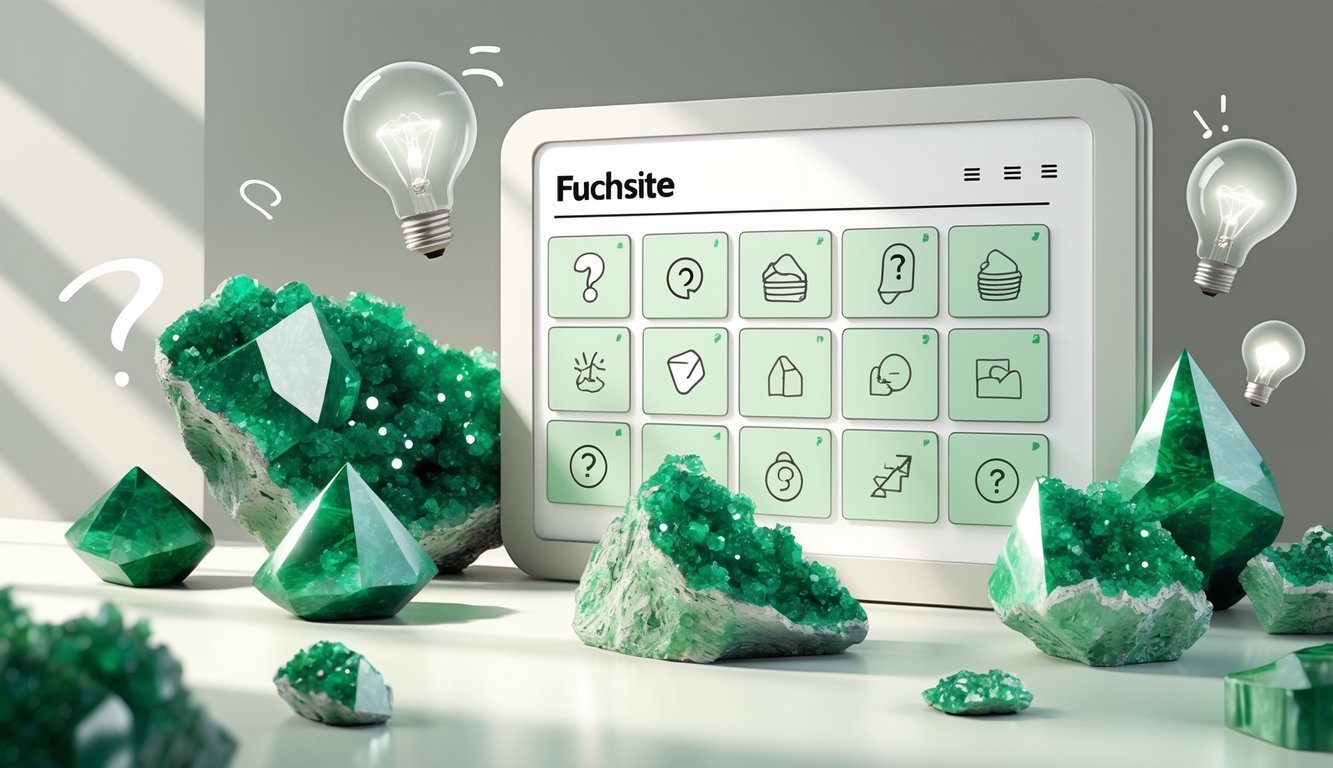PsychNewsDaily Publishers
100 Summit Drive
Burlington, MA, 01803
Telephone: (320) 349-2484
PsychNewsDaily Publishers
100 Summit Drive
Burlington, MA, 01803
Telephone: (320) 349-2484
Fuchsite is a green chromium-rich mica mineral, valued for its beauty, emotional healing properties, and applications in jewelry and spiritual practices. It forms in metamorphic rocks.

Fuchsite stands out as a bright green mineral from the mica family, easily recognized for its shiny, layered appearance and rich chromium content. People often call it green muscovite since it’s basically muscovite mica with a chromium twist, which gives it that unmistakable green shade.
This gorgeous stone grabs attention for more than just its looks—it’s got some interesting properties, too.
You’ll spot fuchsite in everything from jewelry to decorations, and even in healing practices. People appreciate it for both its natural beauty and the energy they believe it brings.
Curious about minerals or just want to dive into the world of crystals with unique meanings? Fuchsite definitely deserves a closer look.

Fuchsite shows off a green, shiny look and turns up in certain rock types. It’s part of the mica family, and its features are pretty unique.
Let’s break down its physical traits, where it forms, its varieties, and a bit of history.
Fuchsite is a silicate mineral in the mica group, made mostly of aluminum, potassium, and chromium. That green color? It comes from trivalent chromium.
You’ll see fuchsite shades ranging from pale green to a rich emerald. With a Mohs hardness of about 2.5 to 3, it’s pretty soft—so it scratches easily.
Fuchsite forms thin sheets or tabular crystals with a shiny, glassy luster. It splits smoothly along flat surfaces, thanks to its strong cleavage.
Its crystals belong to the monoclinic system—one axis tilts compared to the others. Some types even glow lime green under special lighting. It’s not radioactive, and thin pieces can be quite see-through.
Fuchsite forms mostly in metamorphic rocks that have changed because of heat and pressure. You’ll find it in greenschist facies, which means low temperature and pressure conditions.
It often shows up with minerals like quartz, and you’ll see it in phyllitic or schistose metamorphic rocks that look flaky and layered.
Brazil, Russia, India (especially down south), the United States, Germany, and Zimbabwe are top spots for fuchsite. These places offer just the right environment for it to grow.
People sometimes call fuchsite chrome mica or green muscovite since it’s so close to muscovite, just with chromium. That’s what makes it green, while plain muscovite is usually colorless or pale.
There’s a cool variety called ruby fuchsite—it’s got tiny ruby crystals inside, mixing green and red for a striking look. Another related stone is verdite, a kind of green fuchsite that’s great for carvings.
You’ll often find fuchsite hanging out with green aventurine or clear quartz in collections or jewelry.
The mineral got its name from Johann Nepomuk von Fuchs, a German chemist from the 1800s who studied minerals. His research helped people recognize fuchsite’s special traits.
Collectors and miners have prized fuchsite for ages, mostly because of its bright green color and shiny mica sheets. Artists have used it in crafts for a long time—it’s soft and easy to work with.
Older mineralogy books sometimes list fuchsite as a phyllosilicate mineral, tying it back to the mica family’s classic layered structure.

People often connect fuchsite with emotional healing and spiritual growth. It’s said to bring clarity, balance, and positive energy.
Some folks use it to manage stress, boost intuition, and encourage compassion. There are plenty of ways to work with fuchsite, whether you’re focused on wellbeing or just curious.
Fuchsite helps soothe anxiety and stress, making it a favorite for emotional healing. People say it clears emotional blockages, lifting heavy feelings like sadness or old hurts.
This stone nurtures your heart and reminds you of your self-worth. Since it opens the heart chakra, fuchsite supports compassion, peace, and happiness.
It balances emotions, so you can handle challenges with a bit more calm and understanding. Many use it to recover from emotional wounds and find more joy.
If you use fuchsite regularly, you might feel more centered and emotionally steady. Its gentle energy supports healing without feeling overwhelming.
Fuchsite works well in energy work and meditation. Its emerald green color links closely to the heart chakra, inviting positive energy and emotional balance.
During meditation, fuchsite can help clear your mind and deepen your focus. The stone encourages spiritual growth by opening your intuition and connecting you to your inner self.
Some believe it helps you receive guidance from guardian angels or spiritual guides. If you want to work with your chakras, try placing fuchsite on your heart or third eye during meditation.
This can help balance your energy and support clearer thoughts.
Wear fuchsite as jewelry or keep a polished stone nearby to enjoy its benefits throughout the day. You’ll see it in pendants, rings, and bracelets, so it’s easy to take its calming energy with you.
To clean fuchsite, skip harsh chemicals and don’t leave it in the sun too long. Rinse it gently with water, or use sage smoke for a deeper cleanse.
Letting it sit under moonlight, especially during a full moon, can recharge its energy. Regular cleaning keeps fuchsite working at its best.
It’s safe to wear every day, but handle it gently to keep its green shine and energy intact.
People sometimes call fuchsite the “wish stone” because it’s said to keep hope and optimism alive. It stands for growth, renewal, and the flow of life’s vitality.
Carrying fuchsite might invite luck and creativity into your relationships or projects. Its energy encourages self-love and helps you trust yourself, which can boost your emotional wellbeing.
Many believe it helps attract supportive, loving people. Using fuchsite often may support your immune system and overall vitality.
It encourages kindness and joy, making it a nice companion on your personal growth journey.

Here’s where you’ll find answers about spotting fuchsite, its healing effects, and how it connects to ruby fuchsite. You’ll also see how to pronounce its name, what affects its price, and ways to use it in spiritual practices.
Fuchsite usually shows a light to bright green color. You’ll notice its shine and flat layers that catch the light.
Unlike some similar minerals, it forms in chunks, not sharp points.
People believe fuchsite brings calm and emotional balance. They say it supports the heart and encourages feelings of love and kindness.
Some folks use it to manage stress and boost their energy.
Ruby fuchsite is basically fuchsite with small red ruby crystals mixed in. This combo is thought to offer both emotional healing and physical strength.
A lot of people use both together during meditation or energy work.
You say fuchsite as “FOOK-site.” The first part rhymes with “book,” and the last part is just like “site.”
Color brightness, size, and clarity all affect the price. The most valuable pieces have a vibrant green color and few cracks.
Unique shapes or mixes, like ruby fuchsite, can also bump up the price.
Try holding Fuchsite in your hand while you meditate. It might help you focus or just feel a bit calmer.
A lot of people place it on their heart area, hoping it’ll support emotional healing. You could also add Fuchsite to a crystal grid if that’s your thing.
Wearing Fuchsite as jewelry lets you carry its energy with you all day. Some folks swear by it—maybe you’ll notice a difference, maybe not, but it’s worth a try.